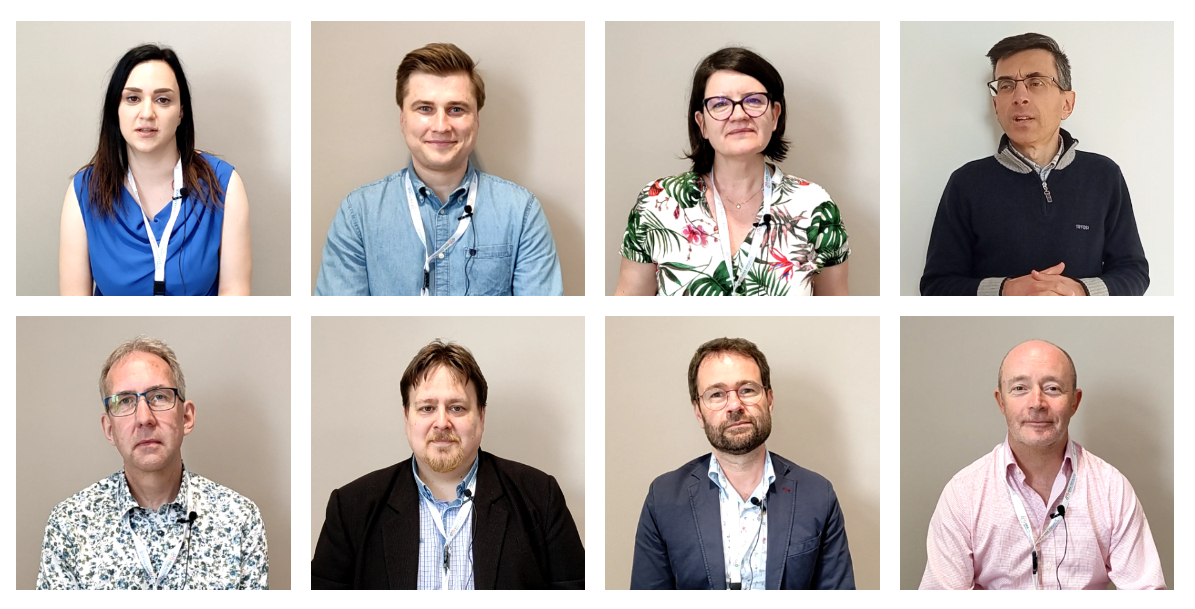
Read our last project newsletter!
The INNO Industry project bids farewell with a final newsletter
Due to different factors as the relocation of work to Asia, the industry contribution to the EU economy is declining. This reflects the necessity to transform the current industry sector into a smarter one. Nevertheless, the European Innovation Scoreboard 2017 shows that SMEs with innovative products or processes have decreased 18 points since 2010 and not all EU countries are at the same level of innovation and smart specialization.
Therefore, it is essential to introduce the necessary changes in current policies to get a real smart transformation of the European industry, with the final aim of being more competitive and reaching the target set by the European Commission of boosting manufacturing´s share of GDP from 15% to 20% by 2020.
On the other hand, clusters have been proven to have a reticular effect to introduce changes in the European industry. The European Cluster Panorama 2016 shows that wages in more developed clusters are close to 3% higher than in industries not located in such regional hotspots. Thus, changing regional clusters policies will trigger the transformation of the industry in a larger scale.
For that reason, the INNO Industry project aims to increase rate of clusters that develop activities to support the transformation towards Industry 4.0 by 2022 through the improvement of regional and national policies.
€1,637,941.00
Research and innovation
INNO Industry proposes to establish a strategic work group with the aim to share best practices related with cluster activities and the promotion of Industry 4.0 to develop a European Blueprint as a policy guide towards clusters 4.0.
The development of INNO Industry will achieve as key outputs a SWOT analysis in 10 EU regions, the identification of at least 30 best practices related with clustering and industry 4.0, one European Blueprint towards clusters 4.0 and 10 action plans to introduce improvements in addressed policy instruments.
The OP encompasses all 11 thematic objectives and corresponding investment priorities, with clear links with INNO4.0 project. The OP has special focus in:
• Increasing the international competitiveness of enterprises, particularly of SMEs, to accelerate economic development and the creation of jobs;
• Improving the infrastructure for research and innovation while strengthening its links with enterprises and the higher education sector;
• Developing a high-quality broadband infrastructure and enhancing access to broadband electronic communication services;
The Programme will play a decisive role in encouraging economic development and ensuring prosperity for all citizens in Slovenia while taking into account the specific characteristics of the two less developed regions - Western Slovenia and Eastern Slovenia. It will significantly contribute to the achievement of the national and Europe 2020 targets for smart, sustainable and inclusive growth. It aims to strengthen efforts particularly in the area of research and development, boost the innovation potentials of small and medium sized enterprises (SMEs), promote resource efficiency and reduce environmental pressures, further develop the transport sector, boost the growth of employment rates and reduce the number of people at risk of poverty and social exclusion.
The OP measure supports new and existing networks in order to decrease competitive disadvantages of SMEs, close gaps in the innovation system, organize collaboration and speed up diffusion of new technologies and collaborative competence development. At regional level it is implemented by Intermediary Bodies (IB) based on their RIS3 in coherence with the national RTI strategy. The relevant Lower Austrian branch of the policy instrument is the Cluster Program Lower Austria 2015-2020
The policy instrument provides support for cluster management, i.e. mainly staff costs of the cluster management team at ecoplus, a regional development agency owned by the regional government. The objectives are to mobilize and initiate collaborative innovation projects and to foster smart specialization in currently 4 cluster initiatives in the areas of green building, food, plastics, mechatronics and e-mobility.
WHY IMPROVE:
The Lower Austrian agenda on digital transformation requires cluster managers to develop specific concepts and tools to provide the necessary support for digital transformation in their specific cluster. This requires improvement in the governance of the policy instrument, such as better collaboration with relevant stakeholders in the region, eventually also new monitoring and evaluation features
Better governance is expected to lead to new collaborative projects related to digital transformation. These projects will be financed by a regional (non SF) funding instrument
Operational Programme "Growth and Employment" sets the investment principles of EU funds, the results to be achieved and areas of support for the entire acquisition period.
Resources of Priority Axis No.3 of Operational Programme aims to support competitiveness and innovation of SMEs. It includes Investment Priority No. 3.2. - supporting the capacity of SMEs to engage in regional, national and international markets, and innovation processes and the following activities under the measure No. 3.2.1. (increasing export proportion of high value added products and services): support for the development of clusters that include measures to promote international cooperation; marketing activities, market research and industry development research, training for cluster coordinators, cooperation with educational and scientific institutions, and clusters services to partners, to strengthen exporting abilities, increase quality of services and development of niche services.
One of the main reasons why this Policy Instrument should be improved is to reach the target (one of) for 2014-2020 period which is to increase the share of high and medium technology products in the export structure, hence improving cooperation and entering international value chains. And of course, it very important for development of SMEs.
The ERDF OP of Murcia Region has a main objective to boost a new economic model, in line with the European Strategy 2020, that enables new jobs, improve the quality of life and environment, within the objective of economic sustainability.
The OP looks to foster a smart and sustainable development, encouraging the territorial, economic and social cohesion, within an efficient use of the available resources.
Some thematic objectives and priorities are concerned within INNO4.0 project:
T.O. 1A - Enhancing R&I infrastructure and capacities to develop R&I excellence, and promoting centres of competence
T.O. 1B- Promoting business investment in R&I, developing links and synergies between enterprises, research and development centres and the higher education sector, in particular promoting investment in product and service development, technology transfer, social innovation, ecoinnovation, public service applications, demand stimulation, networking, clusters and open innovation through smart specialisation.
The OP need to be improved in relation with the support that is given to clusters to carry out activities that have as main objective to support companies in their transition to develop a smart industry.
In that way, the Regional Innovation Scoreboard (RIS) 2017, made by DG Growth, highlighted as regional weaknesses non-R&D innovation expenditures and innovative SMEs collaborating. Managing authority is sure that with the support of clusters it could be face this challenge
The main objective of the CENTRO 2020 is to promote the knowledge economy by intensifying the transfer of knowledge between the scientific and technological system and the regional economic fabric, and increasing the productivity of enterprises
Through the implementation of European funds registered in CENTRO 2020, the Central Region aims to become Innovation Follower (Regional Innovation Scoreboard), to represent 20% of national GDP and converge to national productivity levels, to reduce by 10% territorial asymmetries, to have 40% of the young population with HE and to have an unemployment rate below 70% of the national average
The Funding priority 1.2. aims at promoting business investment in R&D, developing links and synergies between companies, research and development centers and HE sector
To support collaborative networks is one of the objectives of the programme, more specifically:
Support for the creation of new clusters within RIS3 Priority areas
Support for the dynamization of cluster activities
Support to cluster projects for the implementation of international partnerships in the innovation fields
Despite the actions taken, the policy instrument should be improved by increasing the funds and projects, in order to stimulate and support the emergence and consolidation of collective efficiency strategies towards clusters, with the objective to get more proactive clusters, able to foster the transition for a smart industry with better capacity and tools
The NorthMid Sweden regional programe has focused on four priority axis,:
1) strengthen research, technical development and innovation, one main objective is to increase the amount of innovative SME. 2) Increase the access to, use of and the quality of information and communication technology,
3) Increase competitiveness in SME, the objective is to increase the amount of new companies with growth potential,
4) support the change to a CO2 free economy.
The analysis for North Middle Sweden indicates that the region has a number of areas of strength to build upon, but it is also important to encourage the emergence of new areas of strength. Continued work on strengthening innovation and systems should therefore focus both on existing areas of strength with greater attention to gender and on supporting innovation processes in a broader range of sectors. The analysis also identifies a possibility of developing existing clusters and deeper cluster collaboration in new areas, contributing to greater innovativeness in companies and increased collaboration between enterprises and research institutions.
The priority area 1, on which INNO4.0 project focus on, needs improvement in policies for structures and innovation systems. Improvements that generates strengthen research, technical development and innovation. The project INNO4.0 focuses on Industry 4.0 as a base for development, but the policy updates will in the end have a broader impact.
OP R&I represents a joint programme document of the Ministry of Education, Science, Research and Sports of the SR & the Ministry of Economy of the SR (MoE) for the granting of support from ESIF during the period 2014–2020. It´s main objective is to create a stable innovation-friendly environment & to promote the efficiency & performance of the system of R&D&I as a basic pillar for reinforcing competitiveness, sustainable economic growth & employment.
The basic aim of support is to consolidate and modernise the use of existing infrastructures and to promote the activities of excellent research.
Thematic objective 1 (Strenghtening research, technological development and innovation) will be achieved by means of actions performed under Priority Axis 1 “Supporting R&D&I” and Priority Axis 2 “Supporting R&D&I in the Bratislava Region”.
One of the key infrastructure needs is the support of various forms of inter-sectoral partnerships/clustering/technology platforms. The role of clusters has long been undervalued in the economic development of the SR. Several cluster organisations were created in the past by means of bottom-up activities without any systemic support. The existing instrument aims to support clusters as such, cluster organisations & their activities leading to innovation in line with the smart specialization strategy. The OP R&I is one of the main financing tools to implement Industry 4.0 in line with the action plan of the smart industry that is being prepared.
The policy instrument chosen is part of the 1st (SME development) priority of EDIOP
Within this priority Measure 1.2.8 -– “Support of SME development related to industrial digitalisation (Industry 4.0)” is the only structure still open that targets I4.0 directly. It is the key tool and focus of I4.0 policy and targets SMEs aiming for Industry 4.0 development supporting equipment development efforts with 50% funding of projects up to 1.6 mEUR. It is being extended with additional funding for an additional call and is therefore one of the few measures with actual possibility to influence
A specificity of the measure is that it builds on the results of a prior key project (EDIOP 1.3.4 closed, in implementation), which has established a selection, benchmarking and general I4.0-competence development system and allows only SMEs registered in that benchmarking system to apply
The measure is considered to be adequate for the goals, yet the traction behind Industry 4.0 is not yet strong enough
The Ministry would like to see more applications, stronger competition and better average project quality. Clusters, being both positioned at the ideal level close to active SMEs and having an innate interest in I4.0 can be easily enabled to build and coordinate this movement, funnelling it into the existing benchmarking system
This however requires some focused competence development and is expected to yield both better projects and a more dynamic, cluster-driven innovation ecosystem
The Ministry of Economy through the Directorate for Industrial Policy is the main co-ordinator of cluster policy in Romania. The main objective of the cluster policy instrument is the development of new industrial value chains in the context of smart specialisation, based on clusters and enhanced business driven innovation. Currently it is part of the It has following 3 functions
- Mapping and monitoring of the Romanian cluster landscape via the register of clusters held at the level of the Direction for Industrial Policy;
- Representation and policy advice at European (European Commission Danube Strategy) and international level in support of Romanian clusters;
- Support to cluster management organisation via co-organisation of conferences, participation in international projects dedicated to cluster development etc. policy.
Although embedded in the Directorate of Industrial Policy, the cluster policy as such needs to be strengthen at the level of the Ministry of Economy, from the following points of view:
Improved Governance: the role and tasks of the cluster unit within the Directorate for Industrial Policy need to be better Better support instruments: the Ministry of Economy has no cluster dedicated financial (or non-financial) scheme in support of the implementation of the cluster related measures. This leads to very difficult intervention processes and threatens to loss of momentum concerning further cluster development in Romania
We are seeking to address the locally administered Priority 1 of the Growth Programme. Its objective is to invest in science, research and digital innovation and covers:
• Increase investment in research and innovation by SMEs in sectors and technologies identified through SMART specialisation
• Increase the number of SMEs engaged in knowledge exchange, collaborative research and innovation with HE
Locally the Buckinghamshire Thames Valley LEP ESIF Strategy identifies a number of issues it wishes to address to improve the innovation and ‘smart specialisation’, these include , promoting business investment in R&I; developing links and synergies between enterprises, R&D centres and the HE. In particular promoting investment networking, clusters and open innovation through smart specialisation
A number of issues currently exist and evidence highlights specific barriers that hold back SMEs from development. These are the risk and costs associated with this type of investment, access to finance and a very low level of linkages between SMEs and the University
Improvements required are:
• Ensuring calls under priority 1 are focussed on supporting activity which enables clustering
• That funding being made available as part of the Buckinghamshire Growth Loan Fund (BGLF), will support growing companies with local efforts to cluster innovation activity
Link these two improvements through the development of a digitally enabled, cluster support service funded through ERDF.

The INNO Industry project bids farewell with a final newsletter

One of the greatest assets of the INNO Industry project has been the exchange of ideas and points of view to address digitalization challenges.
Over the past two years, partners and stakeholders from the INNO Industry project have been working together by sharing knowledge on digitalization strategies.

Have you missed any of the newsletters of the INNO Industry project?

The action plans prepared by each of the INNO Industry partners have finally been made public.
Over the past two years, partners and stakeholders from the INNO Industry project have been working together by sharing knowledge on digitalization strategies.

On 19 January 2022, an online conference on “Improving innovation policies in the area of adoption 4.0” was held in Bratislava

One of the greatest assets of the INNO Industry project has been the creation of interdisciplinary working groups.

On 18 January 2022, CIEBI organized a virtual conference attended by 10 members of the Centro Region Stakeholder.
Last Tuesday, January 25, AMUEBLA held online the final conference of the INNO Industry project for Spain